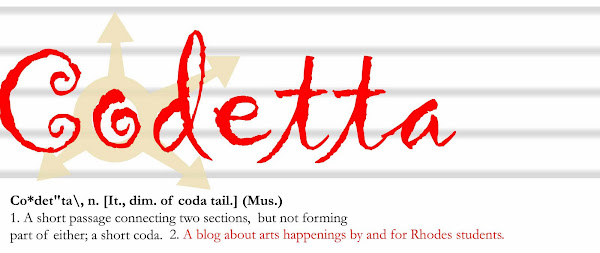
"Hungary’s hottest export since goulash." Funkhaus Europa
"A crossover mixture that radiates the spirit of an alternative traveling circus, Little Cow moves between melancholy and a wild party…catchy songs . . . Top music from a top band." Sound & Image Magazine
Don't miss one of the brightest stars on the world music circuit, Hungary’s Little Cow! This raucous ensemble takes listeners on a joy ride through the carnivalesque and the lyrical, the melancholy and the whimsical with absurd humor and all things known to keep a party going. The band is celebrated for their Gypsy, Balkan, rock, pop, ska and dance music fusions. Little Cow has played all of the hottest venues from New York's reputed Joe's Pub to Globalfest to the esteemed Kennedy Center and are a featured artist on Putumayo World Records. Bring your dancing shoes for an unforgettable night at the Buckman!
WHO: Little Cow
WHEN: Sunday, October 5, 2008, 7 p.m.
TICKETS: $28 for adults, $25 for seniors and students
BOX OFFICE HOURS: Monday through Friday between 10 a.m. and 4 p.m. or 1 hour prior to a performance. Call (901) 537-1483.
WHERE: Buckman Arts Center at St. Mary’s School,
60 Perkins Extended, Memphis, TN 38117
CONTACT: For more information or to arrange an interview with the artist(s), please contact Cindi Younker at cyounker@stmarysschool.org or (901)537-1483.
IMAGES: See attached
ARTIST VIDEOS: www.youtube.com, search “little cow”
Little Cow (Kistehén Tánczenekar) was founded by László Kollár-Klemencz after the great success of his songs for the popular Hungarian cartoon, Little Yellow Cow. This funny figure, which won the audience award at the International Animation Festival in Ottawa in 2002, was brought to life by László and his creative partner, Igor Lazin. In the same year, the protagonist, Little Cow, became the main advertisement figure of Hungary‘s Sziget Festival.
The band first formed to play for the Sziget Festival, with a makeshift set-up and a limited repertoire. At the time, the band was just a hobby of the members. Nevertheless, László and his band mates managed to produce two albums, A Kis Tehén (The Little Cow) in 2002 and Csintalan (Naughty) in 2004.
Little Cow became a full time band, following the phenomenal success of their song Szájbergyerek (Cyber Boy). Although not broadcast on any commercial channels, it’s popularity spread quickly via the Internet. In Hungary, Cyber Boy was a runaway hit breaking music industry records, including most ring tone-downloads, video of the year on Hungarian VIVA Television, and Song of the Year at the Fonogram Awards. Little Cow’s fame began to spread abroad when it was selected for the British Beginner’s Guide to Eastern Europe compilation album. The band was soon bombarded with invitations to music festivals, village days, cultural celebrations and TV shows.
By 2006 they were one of the Hungary‘s most popular bands. Their next album Szerelmes Vagyok Minden Nobe (I’m in Love with Every Lady) was published by EMI in Hungary and internationally by Eastblok Music. In 2007 Csintalan became a Platinum selling album.
Today, they are touring the world. They were selected by UK’s Songlines Magazine as a featured artist for their Top of the World CD and for the Gypsy Grooves album for Putumayo World Records.
Little Cow’s music has been described as “crazy listening”, “underground pop” and “a village version of Beatles” with its Gypsy, Balkan, rock, pop, ska and dance music. The mood of their music races from serenity, absurdity and humor to mature, deep and poetic. The Buckman is pleased to introduce the Mid-south to Little Cow on Sunday, October 5 at 7 p.m. Visit www.youtube.com and search for “Little Cow” to catch one of their kitschy videos or see a rollicking live performance. Tickets are available on line at www.buckmanartscenter.com or by calling (901) 537-1483











